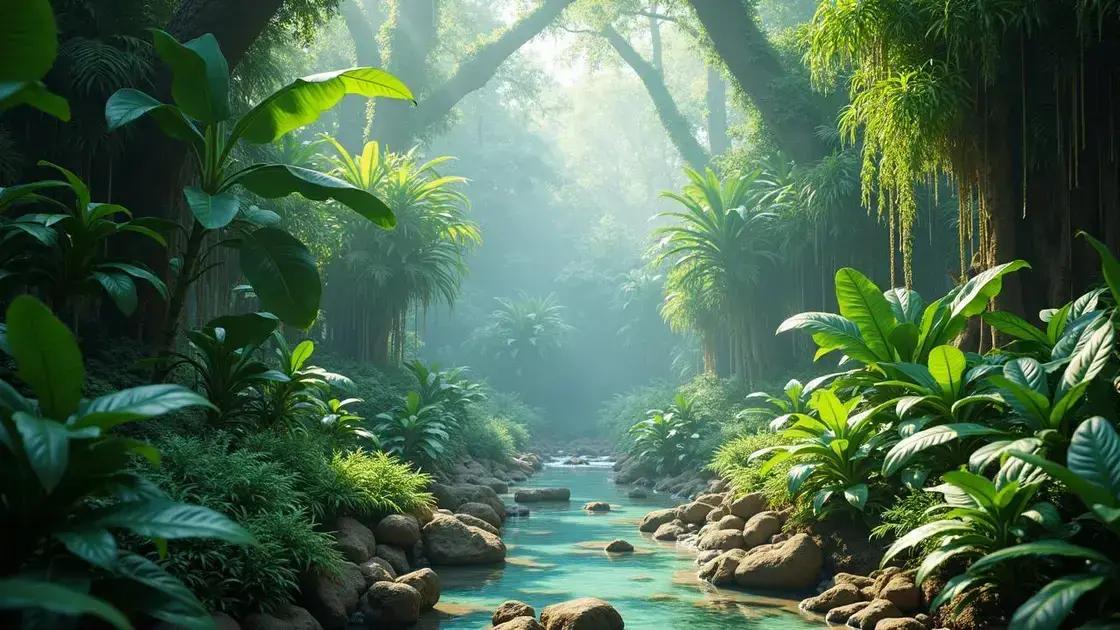How to Care for Tropical Plants: 7 Essential Tips for Thriving Greens
How to care for tropical plants is a question many plant enthusiasts ask. These vibrant greens not only enhance our spaces but also bring a bit of the tropics indoors. By mastering the basics of their care, including soil, light, and humidity levels, you can create a flourishing environment for your leafy friends.
Table of Contents
ToggleUnderstanding the best soil for tropical plants
How to care for tropical plants begins with understanding the best soil composition to support their growth. The right mix ensures proper drainage, aeration, and nutrient retention, vital factors that contribute to their health and vibrancy.
Key elements of soil for tropical plants
When selecting soil, consider the following components:
- Organic matter: Use compost or peat moss to enhance moisture retention and nutrient availability.
- Perlite or vermiculite: These materials improve aeration and drainage, preventing root rot.
- Aged bark: This contributes structure and helps retain moisture.
Your ideal soil mix
For optimal growth, aim for a balanced soil mix. A common recipe includes:
- 2 parts potting soil
- 1 part peat moss
- 1 part perlite
This mix provides essential nutrients while ensuring your tropical plants thrive.
Why is soil pH important?
Understanding soil pH is crucial for plant health. Tropical plants generally prefer a slightly acidic to neutral pH, around 6.0 to 7.0. If the pH is too high or too low, nutrient absorption can be affected. Consider using a soil test kit to determine the pH of your mix.
Common soil-related issues
Here are some common problems related to soil:
- Compacted soil: This can restrict root growth and lead to poor drainage.
- Excessively dry soil: Causes stress to plants, leading to wilting.
- Overly wet soil: Can result in root rot and other diseases.
Continuous learning
To refine your skills in tropical plant care, consider exploring indoor gardening techniques that fit your needs. Applying practical tips will help you create the perfect environment for your plants.
Optimal light requirements for thriving tropical plants

Optimal light requirements for thriving tropical plants are essential to ensure their health and vibrancy. These plants typically originate from regions with bright, filtered light, making it crucial to provide similar conditions indoors.
Understanding light levels
Different tropical plants have varying light needs. Here are some common classifications:
- Bright indirect light: Ideal for plants like pothos and philodendrons.
- Medium light: Suitable for peace lilies and snake plants.
- Low light: Good for plants like ZZ plants and cast iron plants.
Identifying light sources
When assessing your space, consider:
- Natural light from windows: South-facing windows typically provide the most light.
- Artificial lighting: Fluorescent or LED grow lights can supplement sunlight effectively.
- Shades and coverings: Remove heavy curtains that block light but ensure to filter harsh sunlight.
Signs of inadequate lighting
Pay attention to your plants for signs they aren’t receiving enough light:
- Stretched stems: A sign plants are reaching for more light.
- Pale or yellowing leaves: Indicates that the plant is struggling.
- Reduced growth: If plants aren’t growing as expected, they might need more light.
Tips for providing the best light
Here are some strategies to ensure your tropical plants thrive:
- Rotate plants regularly to expose all sides to light.
- Use reflective surfaces to maximize light distribution.
- Monitor light intensity with light meters to determine appropriate placement.
Consider exploring indoor gardening techniques that suit various lighting conditions. Emphasizing the right light can significantly impact your tropical plant care.
Tips for ensuring humidity for tropical plants
Tips for ensuring humidity for tropical plants are essential in maintaining their lush appearance and health. These plants often thrive in naturally humid environments, making it crucial to replicate these conditions indoors.
Understanding humidity levels
Tropical plants generally prefer humidity levels between 40-60%. Here’s how to determine if your plants need more moisture:
- Dry air: Signs include brown leaf tips and drooping leaves.
- Location: Homes with heating or air conditioning may have lower humidity.
Methods to increase humidity
Here are several effective ways to boost humidity for your tropical plants:
- Use a humidity tray: Fill a shallow tray with pebbles and add water to it; the water will evaporate, increasing humidity around the plants.
- Group plants: Placing tropical plants close together will create a microenvironment with higher humidity.
- Regular misting: Lightly misting the leaves with water can provide temporary humidity, especially in dry seasons.
- Invest in a humidifier: A portable humidifier can effectively maintain consistent humidity levels.
Monitoring humidity levels
Consider using a hygrometer to monitor the humidity in your space. This tool can help you maintain the ideal moisture levels for your tropical plants.
Benefits of proper humidity
Ensuring adequate humidity can lead to:
- Healthier, more vibrant leaves
- Improved growth rates
- Reduced pest issues
Don’t hesitate to explore other helpful resources such as exploring indoor gardening techniques to better support the humidity needs of your plants. These practices can transform your indoor garden into a tropical paradise.
In conclusion
Caring for tropical plants involves understanding their specific needs, such as optimal soil, light, and humidity. By implementing the tips discussed—like selecting the right soil mix, providing adequate lighting, and ensuring proper humidity levels—you can create a thriving environment for your plants. Regular attention to these vital aspects will not only enhance their growth but also bring a touch of tropical beauty into your home. For more strategies on improving your indoor gardening experience, check out these tips on enhancing your indoor garden.

